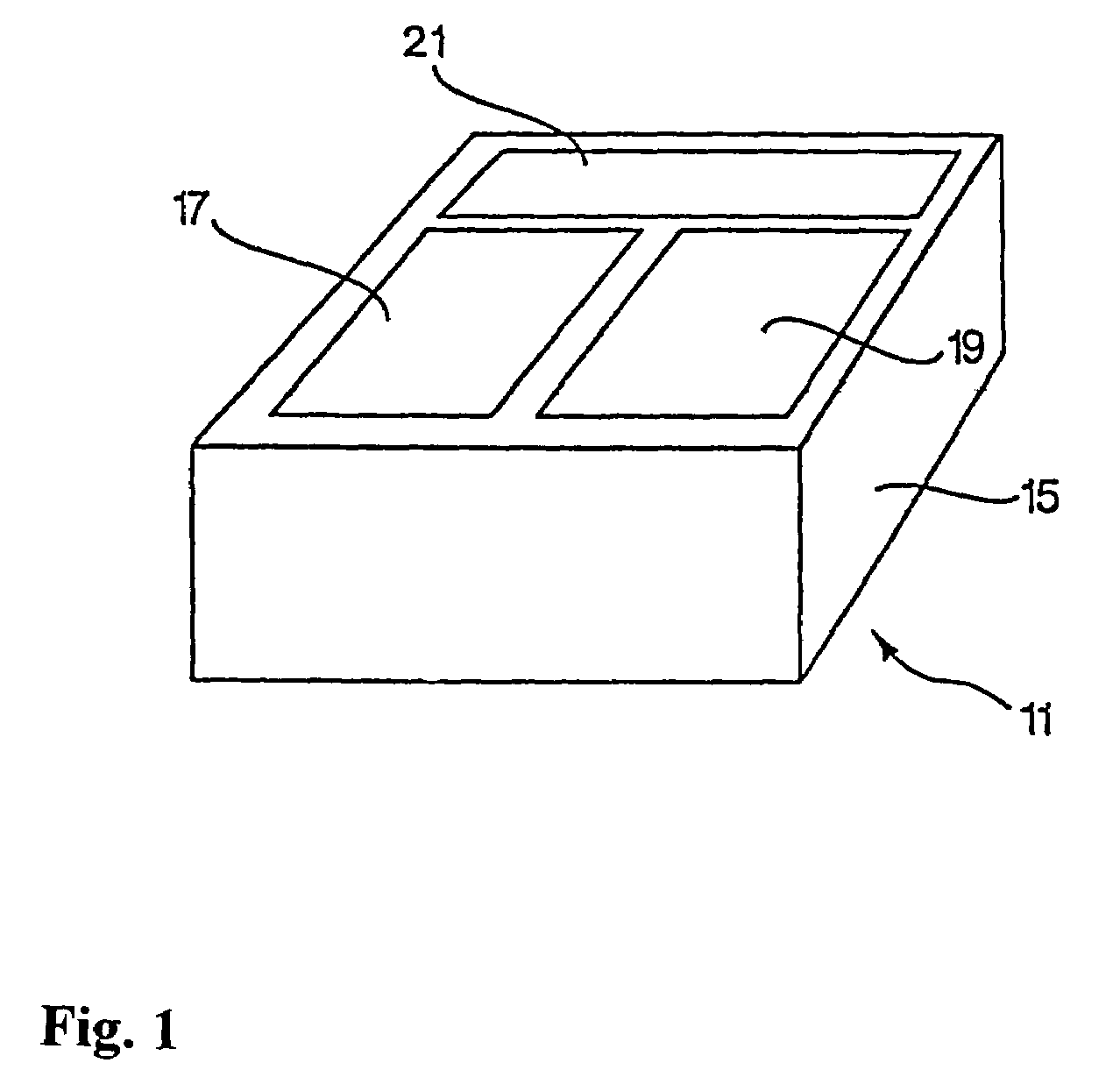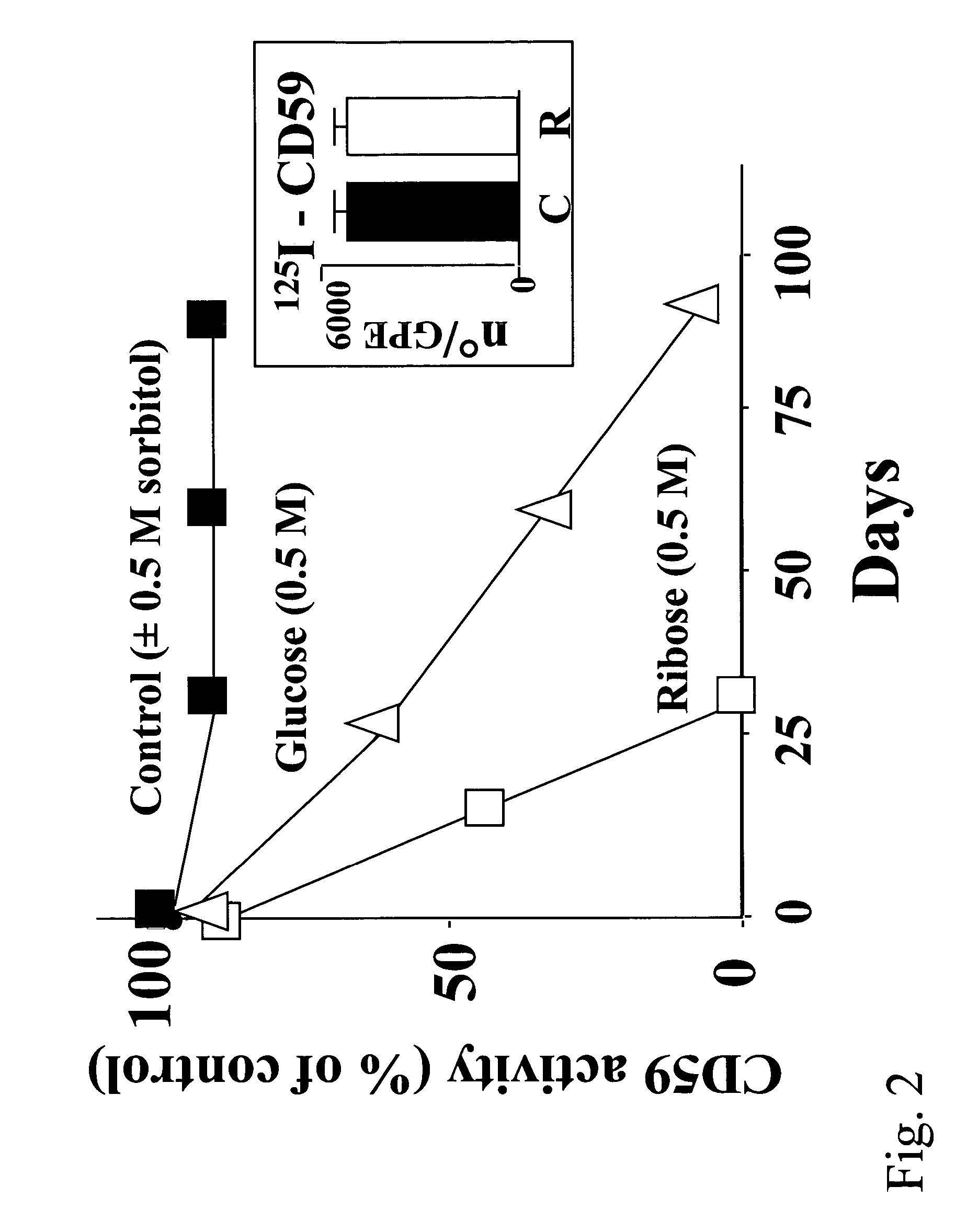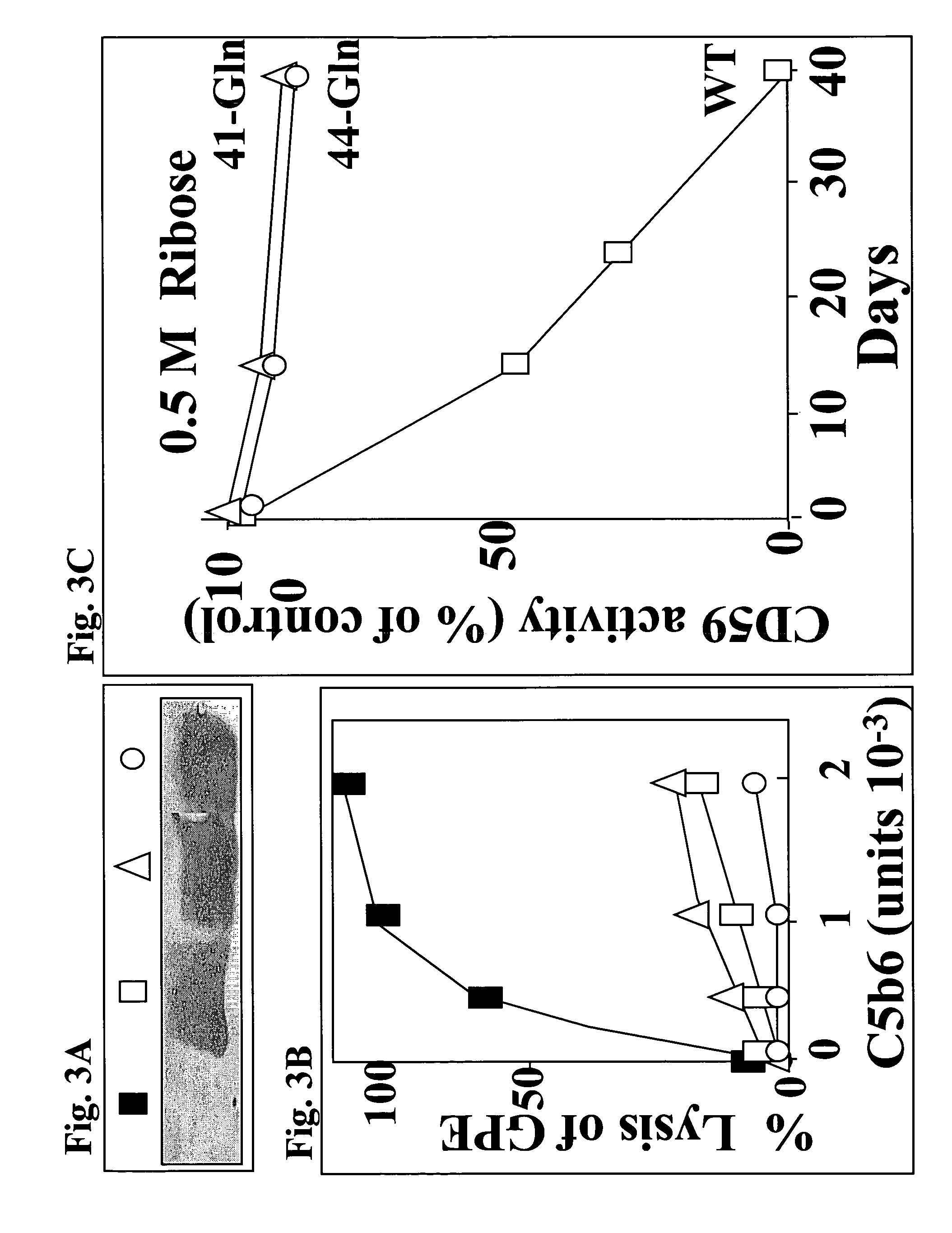Methods, products and treatments for diabetes
a technology for diabetes and products, applied in the field of diabetes products and treatments, can solve the problems of diabetes mellitus, a leading cause of morbidity and mortality in the adult population, and achieve the effects of reducing the k41-glycated cd59 level, and reducing the risk of or the progression
- Summary
- Abstract
- Description
- Claims
- Application Information
AI Technical Summary
Benefits of technology
Problems solved by technology
Method used
Image
Examples
example i
Introduction
[0096]To investigate whether in vitro glycation of human CD59 inhibits its homologous restriction activity a functional assay of glycated CD59 was performed. A 10% cell suspension of guinea pig erythrocytes (GPE) was incubated with purified CD59 previously exposed for different time intervals to the glycating sugars glucose (0.5M) or ribose (0.5M), or to non-glycating sorbitol (0.5M) to control for the high osmolarity of the medium. The sensitivity of the GPE to human membrane attack complex (MAC) was tested using purified human C5b6 and C7, C8 and C9 (Halperin et al, 1993a) The number of CD59 molecules incorporated per GPE was determined with 125I-CD59 before and after glycation with ribose.
Methods
[0097]CD59 purification: CD59 from urine was isolated by anion exchange chromatography using a DEAE protein-Pak HR 8 column (Waters Corp., Milford, Mass.) as described in Davies et al, 1998. CD59 from butanol extracts of RBC and lysates of CHO cells was purified by immunoaffin...
example 2
Introduction
[0103]To determine the location of the site that when glycated inactivates the CD59 molecule, replacement by site-directed mutagenesis of either K41 or H44 was performed. Wild type (WT) and CD59 mutants Gln-41 and Gln-44 were expressed in CHO cells and purified by affinity chromatography. The activity of the mutant CD59 molecules was tested in the GPE hemolytic assay before and after glycation with ribose for different time intervals.
Methods
[0104]Expression and purification assays: Using standard methods, wild-type and mutant CD59 cDNAs were subcloned into the mammalian expression vector pSVK3 (Amersham Pharmacia Biotech Inc. Piscataway, N.J.) and transfected into CHO cells together with the selection marker pBABE, which confers resistance to puromycin. Expression and functionality of the WT and mutant CD59 in the puromycin resistant clones were tested by Western blot analysis, immunohistochemistry in non-permeabilized cells using the YTH 53.1 antibody and a Texas Red co...
example 3
Introduction
[0107]To determine whether glycation of human endothelial cells and human red blood cells (RBC) results in the inactivation of CD59, an experiment was designed to detect whether glycation would render human endothelial cells and human red blood cells (RBC) more sensitive to MACmediated growth factor release or MAC-mediated lysis. Both the endothelial cells and the RBC were glycated and exposed to purified terminal complement components C5b6, C7, C8, and C9 to form the MAC and the mitogenic activity in the conditioned medium was measured.
Methods
[0108]Glycation of RBC: A 10% RBC suspension was incubated with or without ribose (50 mM) for 48 hours at room temperature, followed by 20 min incubation with cyanoborohydride (20 mM). Cell volume was then adjusted by the nystatin procedure (described in Halperin, et al, 1987) and the osmotic fragility of the cell suspension was measured by standard procedures. To ascertain that differential sensitivity to lysis was not caused by a...
PUM
| Property | Measurement | Unit |
|---|---|---|
| time | aaaaa | aaaaa |
| time | aaaaa | aaaaa |
| composition | aaaaa | aaaaa |
Abstract
Description
Claims
Application Information
 Login to View More
Login to View More - R&D
- Intellectual Property
- Life Sciences
- Materials
- Tech Scout
- Unparalleled Data Quality
- Higher Quality Content
- 60% Fewer Hallucinations
Browse by: Latest US Patents, China's latest patents, Technical Efficacy Thesaurus, Application Domain, Technology Topic, Popular Technical Reports.
© 2025 PatSnap. All rights reserved.Legal|Privacy policy|Modern Slavery Act Transparency Statement|Sitemap|About US| Contact US: help@patsnap.com



